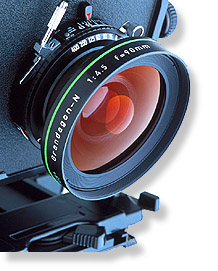 |
| Nice picture! |
The case involved a dispute between a photographer and her agency. At issue was the ownership of the digital files derived from the original film used to create the photographic works.
During the course of her collaboration with the agency from 1971 to 2009, the photographer handed over the film containing the pictures to the agency (which was in charge of the management and exploitation thereof), which then proceeded to digitize them (at its expense) After terminating the relationship, she sought restitution of the totality of the pictures deposited with the agency.
The agency, in turn, noticed that the photographer had posted on her facebook account certain images derived from the digital files and brought legal proceedings for parasitical conduct.
This set the stage for the court to distinguish (as per Section L.111-3 of the Intellectual Property Code) between the photographic works (whose rights vested in the photographer) and the digital files of the photographs which was the medium on which the work existed (which belonged to the agency). (The court did note that despite the agency's ownership of the digital files, they could not be exploited without the photographer's consent.)
Based on the foregoing distincion, the court found that the photographer's use of the digital files on her Facebook page without the agency's consent was unlawful and therefore awarded the agency €1,000 by way of damages.
While the distinction between "intangible work" and "tangible medium" in which the work subsists is nothing new (and is indeed a feature of all copyright systems), this decision is nonetheless significant because it holds that the "tangible medium" in this case were the digital files. In other words, unlike a more traditional scenario where the medium is paper, a CD, a DVD, etc., here the court characterized the digitized versions of the photographic works as the medium. This is especially interesting in light of recent debates on the right of distribution and whether such right is exhaused in the case of digital goods.
Link to the decision here
According to the judgment, the agency is found to be the owner (propriétaire) of the digital files, which are belonging (appartenant) to it.
ReplyDeleteBut what is the legal basis, in this decision, of the agency's right to control the copying of them?
It's far from clear that this should be copyright, since under EU law copyright is given for creative acts -- but just putting negatives through a slide scanner is purely mechanical act, no more creative than pressing the 'copy' button on a photocopier.
So what is the legal basis here for the agency's ability to preclude distribution of these files?
The judgment finds against the photographer for "parasitism" of the digitised files.
In French law, is this a concept independent of copyright infringement?
To follow up my own question, it seems that in French law "parasitism" *is* a concept independent of copyright infringement, being instead governed by Art 1382 of the French Civil Code, which defines "parasitisim" as:
ReplyDelete"copying, at no expense, without using one’s own efforts, for a profit and in an unjustified way, someone else’s economic asset securing a competitive advantage
that is the result of know-how, intellectual work or investments."
https://www.aippi.org/download/toronto14/Presentations/EGaspar_Speaker_Pres_WS_VI_050914.pdf
So for an asset to be protectable against "parasitism", it is enough that there has been investment -- no creative input is necessarily required.
The digital files must be treated as "tangible medium”, otherwise copyright law would be obsolete. Without a fixation of the work we cannot talk about copyrights to such work and in the digital world a material copy is often only a record on the digital media. Such record is not "material" in the sense that the digital data may change the physical location on the digital media and may be easily duplicated but in my opinion it is enough that at any time there is a material substrate that allows the work to be perceived by the recipient.
ReplyDeleteBut anyway it seems that the decision was not based on the copyright law.
I agree with Tomasz. That case seems to me the one regarding the ownership over the original film: fichiers numériques, pellicules, négatifs argentiques, tirages positifs, diapositives, rather than the case based on copyrights and exhaustion since the consent seems to have been validly given by the photographer to use her works.
Delete